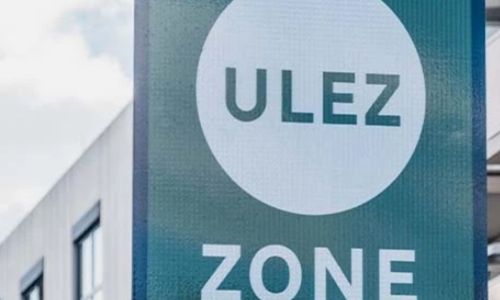
Low Emission Zones: Complete Guide to LEZs
Last updated November 10th, 2023
Air quality in UK cities is an ongoing political issue. The Government has introduced Low Emission Zones (LEZs) within numerous cities to help reduce harmful emissions.
Just as with the Ultra Low Emission Zone (ULEZ) and Clean Air Zone (CAZ) schemes, daily charges are applied to non-compliant vehicles if they travel within a designated LEZ. These charges are designed to discourage drivers of high-polluting vehicles from travelling within LEZs to help improve air quality for residents.
In this guide, we will explain everything you need to know about Low Emission Zones including where they operate, which vehicles are subject to charges – and the key differences between LEZ regulations in different areas.
Value your car in under 30 seconds
What is a LEZ?
Low Emission Zones are typically implemented in cities to reduce air pollution. Certain vehicles that don’t meet the minimum emissions standards will be subject to daily fees if they travel within a LEZ.
Vehicles that may be subject to LEZ charges include:
- Large commercial vehicles (over 3.5 tonnes in weight).
- Minibuses.
- Vans.
- Motor caravans.
- Ambulances.
Cars and motorcycles are not subject to the daily LEZ fees (regardless of their emissions levels).
LEZs are designed to tackle pollution by discouraging drivers of larger high-polluting vehicles from travelling within them.
Where are the Low Emission Zones in England?
LEZs currently operate within the following cities:
- London.
- Brighton (local buses only).
- Norwich & Nottingham (local buses only).
- Oxford (local buses only)*.
*Oxford’s LEZ is distinct from the Oxford Zero Emission Zone (ZEZ), where daily charges apply to all non-electric vehicles travelling within the designated area.
Low Emission Zones in Scotland
- Despite sharing the same name as their English counterparts, the LEZs operating in Scotland have a completely different set of emissions criteria.
- As opposed to being charged a daily fee, non-compliant cars travelling within the Glasgow LEZ will be subject to a £60 penalty charge notice (PCN) - (reduced to £30 if paid within two weeks). The penalty fee will increase with each subsequent infraction, up to a maximum of £480 for cars.
- This is a decriminalised policy, so you will not receive a criminal record if you are charged with a LEZ infraction in Scotland.
- Glasgow is currently the only Scottish city where PCNs are issued for LEZ violations.
- Whilst LEZs are also in operation in Dundee, Aberdeen and Edinburgh, LEZ-related PCNs are not currently issued in these cities. However, this will change when their two-year grace period comes to an end on 1st June 2024 – and enforcement begins.
London Low Emission Zone
London’s LEZ was introduced on 4th February 2008. It covers the majority of Greater London (including stretches of the M1 and M4 motorways, but not the M25) - and is in operation 24 hours a day, 364 days a year (excluding Christmas Day).
When travelling in Greater London, you may see warning signs indicating that you are travelling towards the LEZ boundary – along with signs pointing towards alternate routes that avoid the chargeable zone.
Non-compliant vehicles are detected by Automatic Number Plate Recognition (ANPR) cameras. If you drive a non-compliant vehicle within London’s LEZ zone, you will be subject to a daily charge of £100 or £300.
Compliant vehicles do not have to pay a charge.
How much does the London LEZ cost?
How much you will pay within the London LEZ zone will depend on what vehicle you’re driving, its weight and emissions levels.
What about LEZ in Europe?
- More than 200 towns and cities spanning 15 European countries currently operate LEZ schemes – and this number is only expected to grow.
- European LEZs work similarly to their English counterparts: non-compliant vehicles are subject to daily fees if they travel within the designated zones.
- The German equivalent of a LEZ is called an ‘Umweltzone’ - and there are over 80 such schemes in operation.
- Italy has more than 100 LEZ schemes in operation, with some covering entire regions.
What are the differences between LEZs and ULEZ?
There are a few crucial differences between LEZs and London’s ULEZ:
- Smaller vehicles such as cars and motorcycles are exempt from LEZ charges.
- Non-compliant cars and motorcycles are subject to daily charges if they travel within the ULEZ.
- The LEZ charge is aimed towards larger vehicles such as lorries, vans and coaches, which predominantly feature diesel powertrains.
- The ULEZ charge is aimed at both petrol and diesel vehicles that fail to meet Euro 6 and Euro 4 standards respectively.
Can I drive my car in a LEZ?
You can drive any car within any LEZ zone in England without facing a charge.
However, you cannot drive a non-compliant car within the Glasgow LEZ. By doing so, you will incur a £60 fine (which will increase with each subsequent offence, up to a maximum of £480). These penalties will also be enforced within the Edinburgh, Aberdeen and Dundee LEZs from 1st June 2024 onwards.





